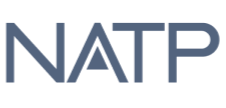The IRS Fresh Start Tax Program: 2025
The Fresh Start Program was designed to help taxpayers stuck in debt to reduce the amount they owe, so they can get back on track with their tax payments and begin to plan for their financial future.
Learning about the requirements and application process to see if you qualify for Fresh Start tax relief can help save you months or even years of payments to the IRS, giving you the opportunity to use that money to support your family, start a business, complete your education, or improve your community.
What Is the Fresh Start Initiative, and Is It the Same as the IRS Fresh Start Program?
The Federal Government created the program, but the IRS is obligated to offer it to eligible American taxpayers who have current tax debt. This is why it is referred to as the IRS Fresh Start Program.
How Does the Fresh Start Program Work?
This taxpayer may also be out of work, and barely able to afford utilities and living expenses. They may not have the means to pay the IRS $15,000, and most likely, they will never have the means to repay the IRS the amount they owe.
The Fresh Start Program mandates that the IRS cannot collect more than a taxpayer can pay. This helps the taxpayer reach an agreement with the IRS, and allows the taxpayer to pay an amount they can reasonably afford.
“The financial situation of the taxpayer is the IRS’s primary criteria for evaluation.”
The taxpayer may have to fill out a form on the IRS website, call or email an IRS representative, or make an appointment to visit their local IRS office to determine eligibility before they are approved.
Once they submit the application, and it is received and processed by the IRS, they will find out if they qualify for Fresh Start tax relief.
After approval, the taxpayer will find out what the new amount of their payment will be.
The four programs available through the Fresh Start Program
Installment Agreement
Pros and Cons of Installment Agreements
While an Installment Agreement is a valid form of Fresh Start tax relief, compromising with the IRS for a reasonable monthly payment is difficult. Your chances of making smaller monthly payments are more likely if you use a professional tax relief company to represent you on your behalf.
Types of Installment Agreements
Partial Pay Installment Agreements are for taxpayers who can make some payments but cannot pay their full tax debt before the collection statute expires. These agreements require a thorough financial review and are reassessed every two years. They allow taxpayers to make payments based on their current financial ability, even if these payments won’t fully cover the debt within the collection period.
Short-Term Installment Agreements
Short-Term Installment Agreements are designed for taxpayers who can fully pay their tax debt within 180 days. These agreements are straightforward and don’t incur any setup fees. They’re ideal for those who need just a little extra time to gather funds to pay their tax liability in full.
Long-Term Installment Agreements
Long-Term Installment Agreements, also known as regular installment agreements, are for taxpayers who need more than 180 days to pay off their tax debt. These agreements typically last up to 72 months (6 years) and may require more detailed financial information. They often involve a setup fee and may require direct debit payments.
Streamlined Installment Agreements
Streamlined Installment Agreements are a type of long-term agreement designed to simplify the process for taxpayers who owe $50,000 or less. These agreements don’t require detailed financial disclosures and can be set up quickly. There are two subtypes: one for debts under $25,000 and another for debts between $25,001 and $50,000, with slightly different terms and availability based on the taxpayer’s status.
Each of these agreement types serves different needs and financial situations, providing taxpayers with options to address their tax debts responsibly while considering their financial constraints.
Offer in Compromise
Although an Offer in Compromise is the best option to reduce your tax debt through the Fresh Start Program, the qualifications are strict. This method is reserved only for taxpayers who are in difficult economic situations, and do not have the financial resources to pay off their federal tax debt in full.
Due to the strict requirements for an OIC, not everyone who owes thousands of dollars to the IRS will qualify for the program.
Your chances of achieving an Offer in Compromise increase tremendously if you have a certified tax relief company on your side. Tax experts have a skillful understanding of the IRS Fresh Start Program requirements, and will not be bullied or tricked by the IRS into a less-than-optimal resolution.
Please refer to our “How to Avoid Tax Relief Scams” section to ensure that you stay away from fraudulent tax resolution companies in your search for professional tax relief representation. These companies will promise you an OIC without first analyzing your specific tax situation and preparing the necessary forms for the IRS.
The IRS is the ONLY entity that can approve of an Offer in Compromise.
The right tax relief company will be:
- Transparent about their process
- Experienced in negotiating with the IRS and getting results for their clients
- Will center their strategies around you and your financial needs.
Currently Non-Collectible Status
While this status does not necessarily remove tax debt, it does stop any collection activities. Such activity includes bank levies, wage garnishments, tax liens, and threatening letters from the IRS. Currently Non-Collectible Status allows a taxpayer to find Fresh Start tax relief in peace, without the IRS coming after them.
To qualify for Currently Non-Collectible Status, you will need to meet the IRS Fresh Start Program qualifications, which we discuss in more detail below.
We highly recommend that you consult with a tax professional before requesting this status from the IRS. Should you try to apply for the IRS Fresh Start Initiative Program on your own, the IRS may attempt to get you to agree to terms that are more favorable for them.
Additionally, once the time period of your Currently Non-Collectible Status ends, the IRS may begin again in their efforts to collect on payments, with phone calls and letters threatening penalties may continue.
A tax relief company can help you stay in Currently Non-Collectible Status for as long as possible, and can help you develop a strategy for when you leave Non-Collectible Status.
Penalty Abatement
You can request Penalty Abatement at any level of IRS collections: by visiting a federal IRS campus, through an automated collection system, or by speaking to personnel at local IRS offices. Keep in mind that a local IRS office can only grant a Penalty Abatement of up to $100. Requesting Penalty Abatement is free.
What Are the IRS Fresh Start Program Requirements?
To qualify for programs like Offer in Compromise or Currently Non Collectible status, you must be able to prove that paying your tax balance would cause significant financial hardship. The severity of your financial hardship determines which Fresh Start Programs are available to you, and to what extent you can have your debt forgiven.
The IRS has guidelines for what constitutes a financial hardship, but the responsibility to prove the hardship falls to you, the taxpayer, or to the tax relief company hired to represent you.
How to Apply for the IRS Fresh Start Program
The documentation you will need includes (but is not limited to):
- Doctor/medical statements
- Fire department reports
- Insurance claims
- Student loan statements
- Death certificates of family members
We would also advise including a letter with your Form 843 explaining your personal situation and why you are unable to pay your outstanding tax debt.
In order to meet the additional requirements to obtain tax relief through the Fresh Start Program, you must:
- File all of your missing or unfiled tax returns
- Your estimated tax payments must be current
- Your current withholdings must be correct.
- Finally, all filings for the last six months must be current or correct.
The best way to prevent your request from being denied is to contact a professional tax relief company.
Even if you get denied by the IRS, a tax relief company can help you file a letter of appeal.
The IRS Fresh Start Initiative Program 2025
Since 2012, there have been no significant changes to the program. Nevertheless, the rate at which IRS examiners qualify taxpayers for tax relief has fluctuated throughout recent years.
In 2020, the Federal Tax Fresh Start Tax Program saw record numbers of qualifications. The large increase in accepted offers for Fresh Start tax relief, and the IRS’ leniency for approving cases, was due primarily to the COVID-19 pandemic, which resulted in financial hardship for millions of Americans.
However, plenty of taxpayers are still experiencing financial hardships today, especially students, parents, and small-business owners.
The best way to know if you qualify for tax debt relief in 2025 is to check your eligibility as soon as possible for the 2025 IRS Fresh Start Initiative Program.
IRS Fresh Start Program Application
To find more information on TaxRise services, and to learn about updates on the IRS Fresh Start Program for 2025, visit our blog, click the site menu to read client success stories, or follow us on Facebook and Twitter!
Qualify today for a Fresh Start.
Learn how easy it is to resolve your tax problems.




